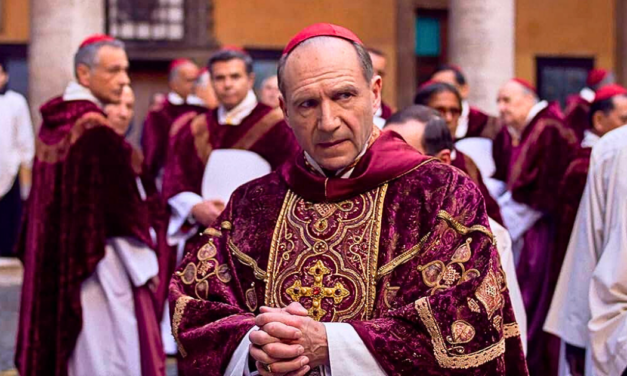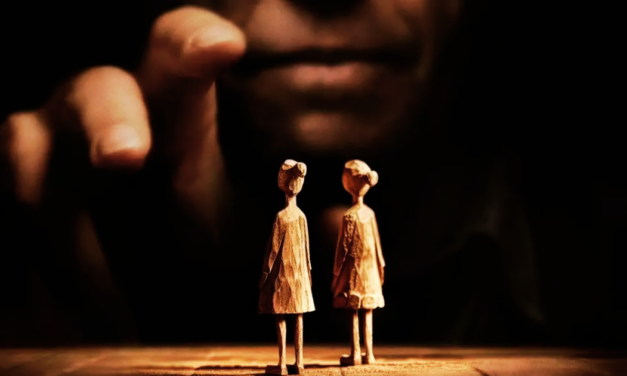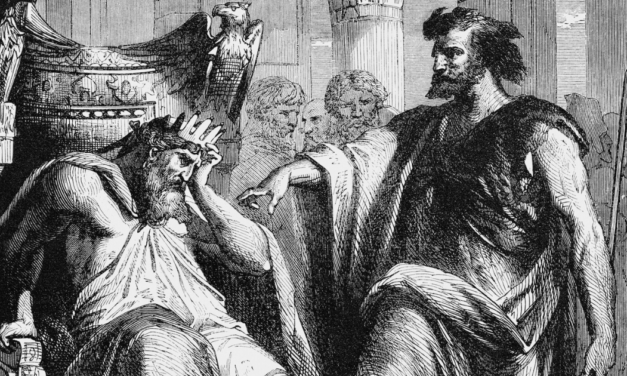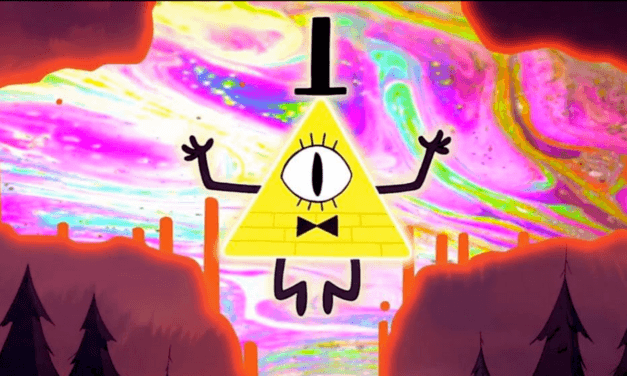This article first appeared in the Effective Evangelism column of the Christian Research Journal, volume30, number3 (2007). For further information or to subscribe to the Christian Research Journal go to: http://www.equip.org
The Discovery Channel recently aired “The Lost Tomb of Jesus,” a documentary about ten ossuaries that archaeologists discovered at Talpiot in south Jerusalem, that, the documentary claims, originally contained the bones of Jesus, his mother, his “wife,” his “son,” and other relatives. The ossuaries were empty, since, shortly after their original discovery, the remains were reburied at a designated place in Greater Jerusalem.
The documentary, although skillfully filmed and interesting to view, reaches sensational conclusions that continue what seems to be a long-running media attack on the historical Jesus, which in popular parlance might be termed “More Junk on Jesus.” One might have thought that this had culminated in that book of falsehoods, The Da Vinci Code, but, no, the misinformation on Jesus continues, usually just in time for the church’s seasons of Advent (before Christmas) or Lent (before Easter).
The television audience has reacted to the program in various ways:
Unqualified Acceptance: “Scholars were involved, DNA evidence was used, statisticians gave the odds at 600-to-1 that this had to be Jesus’ family tomb, so it must be a slam-dunk: Jesus’ remains have been discovered, so I no longer believe.” Or, “I never did in the first place.” This is the response of the credulous and naïve, who accept anything in print or on film as factual truth.
Conditional Response, No Concern: “If those really are Jesus’ bones, would it affect my faith? Not my faith!” said Jesus Seminar co-founder John Dominic Crossan, to which most Christians might respond (were it not so judgmental): “Of course not. He has no faith.”
Tepid Response: “I don’t know. I’ll wait for further evidence. I really don’t know what the fuss is all about.” When there is an attempt to rip out the very heart of the Christian faith, such an attitude makes little sense, particularly for the Christian.
Conditional Response, Much Concern: “If those really are Jesus’ bones, it could destroy my faith.” This reaction is certainly grounded in logic, but the premise is without merit, as we shall see.
Hostile rejection: “This is blasphemy! The Bible says that Jesus rose from the dead, so how could He have left His bones behind?” This response may be fine for fellow Christians, but it leaves the rest of the world unimpressed.
None of the above, I think, is an optimal way for Christians to react to this latest furor (although I must confess to a good deal of sympathy for the last!). Instead, I propose a response based on reason and fostered by faith.
Reason. The obvious first step should be to examine—with cool dispassion—the evidence supplied by the producers of this docudrama. This is difficult, however, due to the extremely fragile nature of that evidence. (There is a much stronger case for discovering Jesus’ bones and for how that would affect the world in the scenario I conjure up in my novel A Skeleton in God’s Closet than there is in the gossamer chain of “proofs” uncovered at Talpiot. Don’t worry, though: the novel has a happy ending.) Nearly every interested archaeologist or historian in the world has found the conclusions of the Discovery Channel’s documentary absolutely unfounded. Here are the most important reasons they put forth:
(1) Nothing is new here: scholars have known about the ossuaries—and been unimpressed by them—ever since March of 1980, so this is old news recycled. The general public learned about the ossuaries in 1996, when the BBC filmed a documentary on them and the “findings” tanked again, although more recently, James Tabor’s book, The Jesus Dynasty, tried to revive interest. Filmmakers James Cameron (The Titanic, Terminator films) and Simcha Jacobovici (various documentaries relating to Judaism) have climbed aboard the sensationalist bandwagon as well, the latter coauthoring a newly published book, The Jesus Family Tomb, which is equally as groundless as The Jesus Dynasty.
(2) All of the names inscribed on the ossuaries—Yeshua (Joshua, Jesus) son of Joseph, Jose (Joseph), Maria (Mary), Mariamene e Mara, Matia, and Judah son of Jesus—are extremely common names for Jews of that time and place, and thus nearly all scholars consider that these names are merely coincidental, as they did from the start. Some even dispute that “Yeshua” is one of the names, suggesting “Hanan” instead. One out of four Jewish women at that time, for example, was named Mary. There were 21 Yeshuas (Jesuses) who were important enough for the first-century Jewish historian Josephus to record, with many thousands of others that never made history.
(3) The “wondrous” mathematical odds that these names must refer to Jesus and his family are simply numbers games hyped by Jacobovici. One must believe, to reach his conclusions, that every link in a long chain of hypotheses he presents is true, when in fact every link is weak enough to break the chain.
(4) There is no reason whatever to equate “Mariamene e Mara” with Mary Magdalene, as Jacobovici claims. Using a late, apocryphal, fifth-century romance like the Acts of Philip to try to demonstrate this link shows how far he has to reach. In fact, a better translation of “Mariamene e Mara” is “Mariamne (as it is usually spelled today) also called Mara.” Better yet, the latest evidence reports that there were two skeletal remains inside that ossuary, so the inscription is best translated, “Mariamne and Mara” or “Martha.”
(5) It also does not matter if Mariamene’s DNA is different from that of “Yeshua.” That particular “Mariamne” could have been the wife of that particular “Yeshua,” who was certainly not Jesus, or she could have been the wife or sister or daughter of any other male in that group! Although a magnet for attention, this use of DNA proved nothing whatever.
(6) There is also good reason not to equate “Maria” with Mary the mother of Jesus. Church tradition and the earliest Christian historian, Eusebius of Caesarea, are unanimous in reporting that Mary, the mother of Jesus, died in Ephesus, where the apostle John, faithful to Jesus’ commission from the cross, had accompanied her.
(7) Why in the world would the “Jesus Family” have a burial site in Jerusalem, of all places, the very city that crucified Jesus? Galilee was their home. They might have had such a family burial site in Galilee, but not Judea.
(8) The “Jesus Family” simply could not have afforded the large, ornate crypt uncovered at Talpiot. This is the burial site of a prominent, upper middle-class or wealthy family from Jerusalem, not a carpenter’s clan from Galilee.
(9) Nor, had the disciples stolen Jesus’ body for reburial there, would they have put his name on the ossuary. Their motive, obviously, would have been to hide the identity of Jesus’ body in view of its “claimed” resurrection.
(10) If this were Jesus’ family burial site, what is Matthew doing there—if indeed “Matia” is thus to be translated?
(11) Why is there no tradition whatever—Christian, Jewish, or secular—that any of the Holy Family were buried at a family plot in Jerusalem?
(12) Please note the extreme bias of the Canadian director and leading figure in this documentary, Simcha Jacobovici, who seems often to sensationalize in his films. You may have caught his television special, The Exodus Decoded, in which he “explained” just about everything that still needed proving or explaining in the Exodus account in the Old Testament! It finally bordered on the ludicrous, and now he’s doing it again, though in reverse: this time attacking the scriptural record. As for James Cameron, how do you follow the success of The Titanic? Well, with an even more “titanic” story. The television footage of Jacobovici and Cameron making their drastic statements in a press conference on February26,2007, prior to the airing of “The Lost Tomb of Jesus,” was disgusting, as was their subsequent claim that they “respected” Jesus. The dramatic recreations in the documentary, which favored their own hypotheses, the statements of experts taken out of context, the misquotations of some of those experts, and the selective editing are all a disservice to the truth. (Ted Koppel’s sober discussion following the docudrama was the finest part of the program, and a touch of objectivity on the part of the Discovery Channel.)
(13) Even Israeli archaeologists and authorities, who—were they anti-Christian—might have used this “discovery” to discredit Christianity, did not do so. In fact, they did quite the opposite. Joe Zias, for example, for years the director of the Rockefeller Museum in Jerusalem, holds Jacobovici’s claims up for scorn and his documentary as “nonsense.” Those involved in the project, he added, “have no credibility whatever.” Amos Kloner, the first archaeologist to examine the site, called the conclusions in question “completely impossible…nonsense.” He added, in a Jerusalem Post interview, “Three or four ossuaries have been discovered with the names, ‘Jesus, son of Joseph.’” David Mevorah, curator of the Israel Museum, calls the results “far-fetched.” William Dever, one of America’s prominent archaeologists, said, “This would be amusing if it didn’t mislead so many people.”
(14) Finally, and most importantly, there is no external literary or historical evidence whatsoever that Jesus’ family was interred together in a common burial place anywhere, let alone Jerusalem. All the surviving evidence, in fact, totally controverts this in the case of Jesus Christ.
Faith. The New Testament reports specifically that Jesus was buried in the tomb of Joseph of Arimathea near Golgotha (not miles away in Talpiot), and that He did not remain there long. All four gospels; the Book of Acts; the letters of Paul, Peter, and other apostles; and the writings of the early church all testify that Jesus rose from the dead, and did not leave His bones behind in any tomb or ossuary, as the current sensationalists claim.
Only a fraction of a page needed to be devoted to “faith” here, since reason alone is sufficient to show that this documentary has constructed a house of cards over the Talpiot tomb. Its assumptions about the ossuaries turn out to be nothing less than naked hype, baseless sensationalism, and media fraud, “more junk on Jesus.”
—Paul L. Maier








